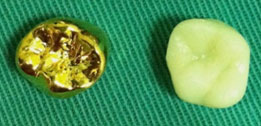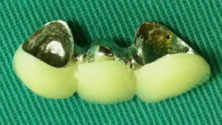Introduction
Tooth decay and gum diseases are the main dental problems. Tooth with minor decay normally can be filled directly using appropriate dental filling material. However an indirect restoration such as crown and bridge may be constructed to save the tooth with extensive decay or to replace one or more missing teeth. These restorations are cemented onto existing teeth or implants and are referred to as “fixed” prosthesis. They can only be removed by a dentist, unlike removable devices such as dentures, which you can take out and clean daily.
Crown
A crown (some people call it a ‘cap’), is custom made to fit over your tooth after the dentist has prepared it. A full crown would need preparation that involved entire structure of the tooth, whereas a partial crown only involved part of it. It is used to restore a tooth that would otherwise be in danger of breaking. It covers and protects the tooth. A crown can be used to:
- Restore a damage/fractured teeth
- Improve appearance, color, shape or alignment of the teeth
- Cover a dental implant
- Cover a tooth with root canal treatment
- Attach a bridge
Type of Crowns
A crown can be made of gold, porcelain, combination of metals or metal with porcelain or resin. When choosing a crown think about its durability, where it will be placed and how it will look.
Metal crown – This crown is made of gold or other metals. This type is best used on back teeth.
Benefits:
- Strong, durable and long lasting
- The amount of tooth removed for the fit of this crown is LESS
- It yields a “softer bite” so it is less traumatic on the other teeth that it meets
Gold is a cost wise choice since they are long lasting to provide good wear value.
Porcelain – Made of porcelain or reinforced resin. It comes in a range of shades to blend with your teeth. This crown is more likely to “chip” than a metal crown. It is recommended for front teeth.
Benefits:
- Natural appearance, smooth surface and durable
- Captures and reflects light like natural teeth
Combination crown – is porcelain fused to metal (PFM). The base metal makes this crown stronger than an all porcelain or resin crown yet it is still not as strong as a metal crown.
Benefits:
- Attractive, durable, long lasting and natural appearance
|
|
|
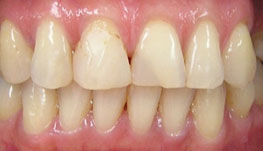 |
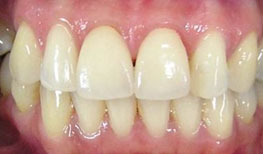 |
|
Large restorations of upper front teeth were replaced with all ceramic crowns |
|
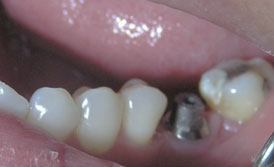 |
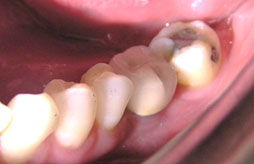 |
|
A crown supported with implan |
|
Bridge
Bridges are commonly used to replace one or more missing teeth. They are cemented to the natural teeth or implants surrounding the empty space. These teeth, called abutments, serve as anchors for the bridge. A replacement tooth, called a pontic, is attached to the crowns that cover the abutments.
Missing teeth need not be replaced in any conditions. A replacement is needed when to:
- Improve chewing ability
- Improve appearance
- Improve speech
- Prevent drifting of neighboring teeth
- Prevent over erupting of opposing teeth
Types of Dental Bridge
There are three types of dental bridges:
Traditional Fixed Bridge
A dental bridge is a false tooth, known as a pontic, which is fused between two porcelain crowns to fill in the area left by a missing tooth. There are two crowns holding it in place that are attached onto your teeth on each side of the false tooth. This is known as a fixed bridge. This bridge can replaced one or more missing teeth.
Resin Bonded Bridges
The resin bonded is primarily used for front teeth. Less expensive, this bridge is best used when the abutment teeth are healthy and don’t have large fillings. The false tooth is fused to metal bands that are bonded to the abutment teeth with a resin which is hidden from view. This type of bridge reduces the amount of preparation on the adjacent teeth.
Cantilever Bridges
In areas of your mouth that are under less stress, such as your front teeth, a cantilever bridge may be used. Cantilever bridges are used when there are teeth on only one side of the open space. This procedure involves anchoring the false tooth to one side over one or more natural and adjacent teeth.
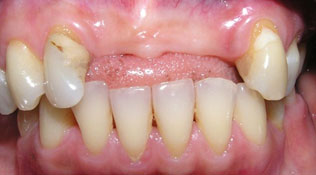 |
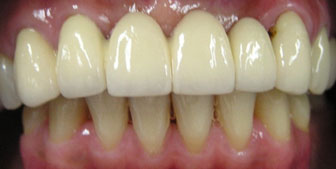 |
|
|
A fixed bridge replacing three missing teeth |
||
How are Crowns and Bridges Made?
Examination and assessment of the tooth will be made at the beginning of the treatment. Preparation will be done on the tooth (or teeth) by reducing the size, so that the crown or bridge will fit over it properly. After reducing the tooth/teeth, exact mould (impression) will be taken. If porcelain is to be used, the correct shade will be determined, for the crown or bridge to match the colour of existing teeth.
Using this impression, a dental lab then makes the crown or bridge, in the material the dentist specifies. A temporary crown or bridge will be put in place to cover the prepared tooth while the permanent crown or bridge is being made. When the permanent crown or bridge is ready, the temporary crown or bridge is removed, and the new crown or bridge is cemented over your prepared tooth or teeth.
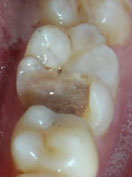 |
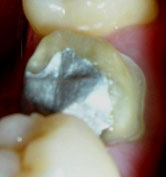 |
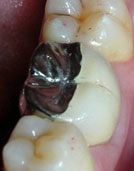 |
||
|
Placement of a full crown (porcelain fused to metal) after decayed tooth was restored and prepared |
||||
Cost of the crown and bridge
The cost of the crown and bridge varies depending on the materials and design.
How long will the Crown and Bridge last?
How long our crown and bridge lasts depends on how well we look after it. The crown and bridge themself cannot decay, but decay can start where the edge of the crown joins the tooth. Therefore, it is important to keep this area just as clean as we would in our natural teeth. The most important step to ensure the longevity of our crown and bridge is to practice good oral hygiene. The teeth and gums must be kept healthy. Regular dental check-up is very important. On average, dental crowns last between 5 and 15 years. To prevent damage to new crown or bridge, one must avoid such habits as grinding or clenching the teeth, chewing hard foods, ice or other hard objects.
| Last Reviewed | : | 25 April 2014 |
| Writer | : | Dr. Zaini bt. Aziz |
| Accreditor | : | Dr. Ithnaniah bt. Abd Wahab |
| Reviewer | : | Dr. Rohani bt. Mahmood |


